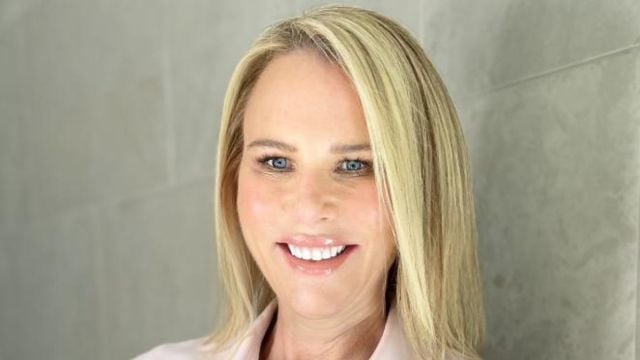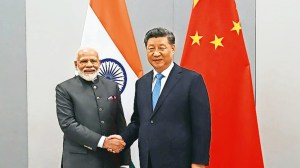French hospitality giant Club Med, owned by Chinese conglomerate Fosun International, hopes to set up its first resort in India by 2030, depending on land availability, adequate air connectivity, and ability to meet sustainability standards. Known for its all-inclusive experiences, Club Med’s India business, which relies on a network of travel agents and influencers to attract domestic travellers to its dozens of resorts across the world, has grown considerably in recent years. The Covid pandemic, too, has transformed the profile of the average Indian traveller, who is now more adventurous and sophisticated. In a conversation with Aggam Walia, Rachael Harding, Club Med’s CEO of East, South Asia and Pacific, talked about variation in global travel demand, evolving preferences, and the company’s India plans.

Almost four years have passed since Covid. How has demand shaped up globally and specifically in Asia?
The global travel market has been unwinding from Covid in different areas at different paces. Outside of Asia, 2020 was obviously a challenging year for everybody, but after that our markets like Europe and North America came back quite quickly. While here in Asia, it took us some time to really unravel ourselves. Today, we’re still seeing challenges in some markets. If I look at the Chinese mainland, for example, they’re still struggling with outbound air capacity, which we’re also seeing in some of our markets across Asia.
Story continues below this ad
Last year, Club Med saw record global sales surpassing 2 billion euro in business volume with operating margins up 50 per cent from pre-Covid levels. In Asia too, we doubled our business last year versus the year before, so definitely when we talk about revenge travel, that happened last year in most markets in Asia. In some markets like Hong Kong, Taiwan, to a lesser degree Malaysia, and certainly China, it’s only this year that we’re starting to see a lot of revenge travel from those markets. Here in Asia, we’re up 38 per cent in the first half of this year versus last year.
How has Club Med’s India market performed during this period?
In India, the trajectory is really promising when we think about rising disposable incomes. There’s economic growth that’s certainly been predicted, which fuels travel demand. India has been an important source market for us because we are a multicultural brand and it’ll continue to be a key focus. Pre-Covid, it grew considerably high. (Post-Covid) it hasn’t grown at a rate as fast as some other countries. Last year, we were about 30 per cent up (in India) versus 2022, whereas across Asia we saw a little bit more of an uptake than that.
The landscape of travel has changed in India too. The rise of online travel agencies and mobile booking platforms has really revolutionised the way Indians can grasp content and book, which has boosted demand. The biggest thing in India is this continued improvement of airline connectivity. When you have a global hospitality portfolio, air connectivity is everything. I know Air India in particular has purchased many aircraft coming in now and in the future years, and that many more airports are slated to be built around India for both domestic and international travel. This growth in aviation is really going to fuel outbound travel demand.
Story continues below this ad
What are some of the defining changes in travel preferences following Covid?
A big trend since Covid is people moving away from seeing as much as they can to what we would call ‘slow travel’, which is people wanting more time in one place for deeper, richer, and immersive experiences. I’m seeing that in India as well. During Covid, we saw these incredible pictures beamed from around the world of areas that were not being touched and how their beauty was shining through. I think everybody now is very conscious of the impact that they have on the destination that they visit. People are also seeking good value, and because they are staying in one place a bit longer, they’re seeking an elevated level of experience and personalisation when they’re there. That comes in with a premium resort or hotel company and this is why we’re seeing a big increase in our exclusive collection range, which is about 20 of our current properties. Definitely, people are driving more towards premium travel and spending longer in each destination.
How have these trends impacted Club Med’s India business?
Indian travellers have become more adventurous and sophisticated in their travel choices. They’re seeking more diverse and experiential experiences beyond the traditional sightseeing. We used to have mainly honeymooners travelling to the Maldives. Now, our profile is 70 per cent families, 13 per cent couples, and 13 per cent friends and a handful of individuals. They’re not just going to the Maldives, which was 80 per cent of the business. Now, they’re going skiing to the Alps or to Japan, they’re going to the Seychelles, to Mauritius, to Bali. They are staying from what used to be two nights to more four nights in Asia and more seven to eight nights over in further afield like Europe. Again, that’s slower, longer, and more immersive travel. It’s really shifted.
Story continues below this ad
Does Club Med plan to set up resorts in India?
A plan to enter India at some point is always a desire for us. We know that there are ski resorts in India and we’ve seen a huge increase in desirability from Indians wanting to go skiing, particularly to the Alps. Ski resorts make up about 30 per cent of our portfolio, but they’re specifically very profitable for us because they’re high-yielding products. The mountain strategy has been very successful here in Asia–we now have four ski resorts in Japan and three in China. There is demand in India. The question is for a ski resort anywhere, it has to have a certain square footage because we are only ski-in ski-out. We need to have enough space to be able to execute the all-inclusive experience, which includes ski rooms, ski lockers, entertainment, restaurants, and of course, accommodation and kids club. It also has to be accessible for more markets than just India because the key to Club Med’s success is to not rely on one market ever. Outside of ski resorts, we have always kept our eye open for a sun resort in India. But again, we need to make sure it’s a close driving distance from an international airport, can be fueled by a few markets, and is able to be of the size that we need. The search is ongoing, but I would love to have something in India really soon.
What are some of the key factors that would determine your India plans?
One is access. We need to be within two hours of an international airport that’s accessible to 2-3 markets. If it’s a greenfield project, where we build, how we build, the materials we use, the labour we use, how we bring in the local community, how we procure everything, and how we operate all has to fall under globally-recognized eco standards. And then, we need to have a certain piece of land. It’s difficult in India. In the areas that are desirable, somewhere like Goa, it’s already really packed in terms of space. These are a few things, but it’s certainly not out of reach and we wouldn’t even be looking at India if we didn’t think something could come up. At the moment, there is nothing that’s in the pipeline. But certainly by 2030, I would love to see something in India.
































